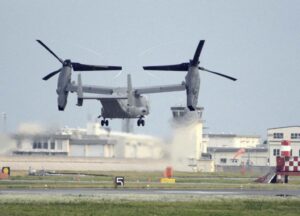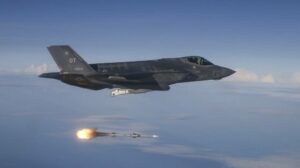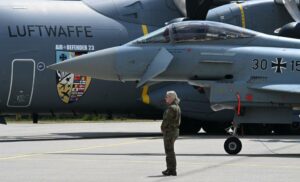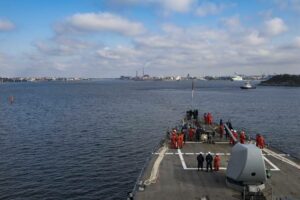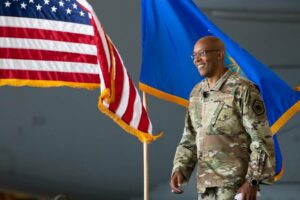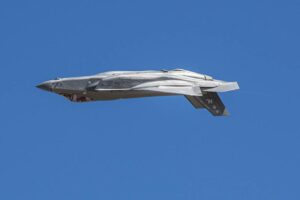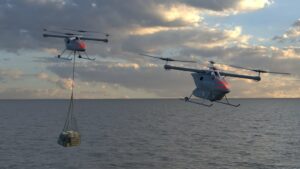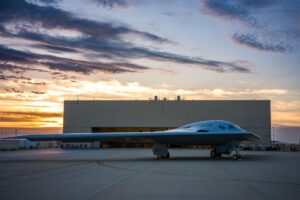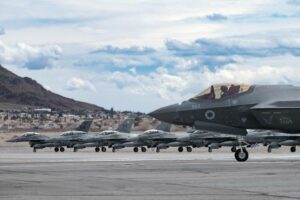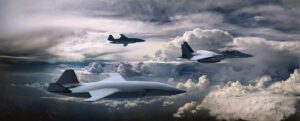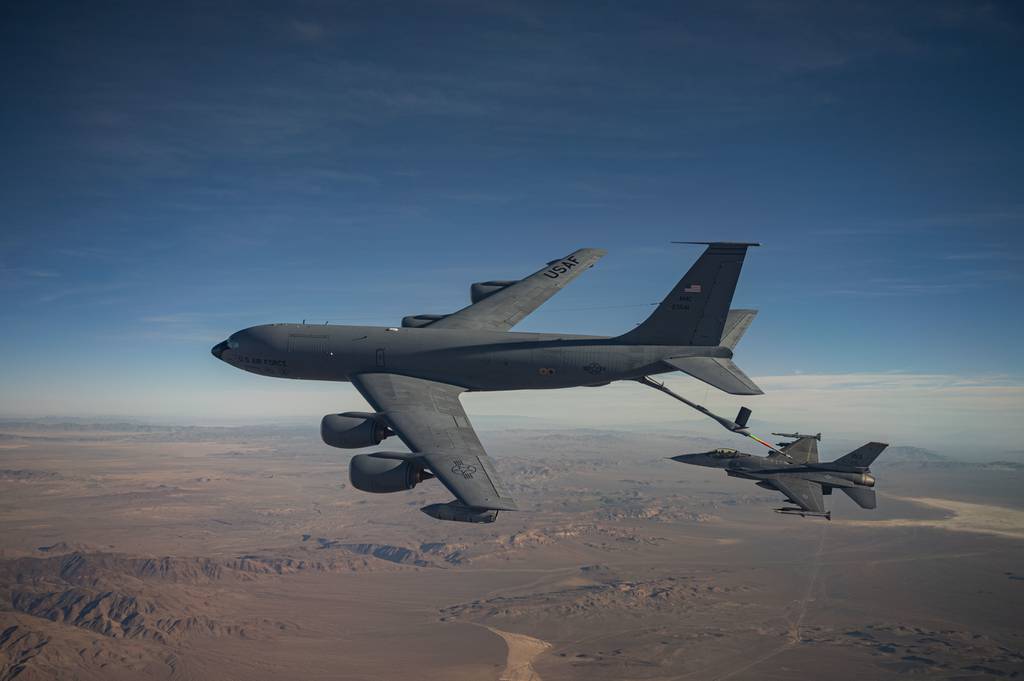
Air Force KC-135 Stratotanker pilots are inching closer to normal operations after incremental software fixes to the tanker’s glitchy autopilot have led the service to ease flight restrictions on the jets.
Airmen are now allowed to fly KC-135s with the Block 45 software upgrade — which includes the autopilot in question — at altitudes below 10,000 feet, Air Mobility Command boss Gen. Mike Minihan said Sept. 11.
“We’re just now bringing the operational capability of the autopilot back up. I’ve got confidence in the fixes,” he told Air Force Times at the Air and Space Forces Association’s annual Air, Space and Cyber Conference outside Washington.
It’s the latest step toward resolving a potentially dangerous problem that began more than two years ago.
In early 2021, KC-135 crews began reporting incidents of the autopilot turning on or off, unprompted, during flight. That has caused the jets to unexpectedly tilt toward the ground or pitch upward, including in at least one instance when the aircraft was within 3,000 feet of the ground.
The issue has occurred five times since May 2021, Air Force spokesperson 1st Lt. James Stewart said. All but one of those instances happened between May 2021 and May 2022.
The Air Force initially said a faulty power supply caused the autopilot to malfunction, but later attributed the problem to an error in the program’s code, defense technology publication The War Zone reported last year. Collins Aerospace, which designed the software, was expected to begin testing fixes in April 2022.
The Air Force is still rolling out the software patch across its fleet of more than 300 KC-135s, Stewart said. The service did not answer how many KC-135s are flying the original Block 45 software and how many have the updated version.
Block 45 was installed on 272 aircraft as of March 2023, according to the service’s budget documents. It is slated for use on 329 airframes based on the C-135 — all but a few dozen of which are KC-135s — plus 19 pilot simulators and five cockpit simulators.
Data collected by the Air Force to inform its Sept. 11 decision to change the flight restriction showed the autopilot had worked correctly over more than 10,000 hours in flight, Stewart said.
Now a new policy is in place to keep troops safe while they begin to use the updated autopilot on their daily missions. Airmen can’t turn on the autopilot when flying when flying in bad weather or at night at an altitude of less than 2,000 feet.
Allowing the autopilot above 10,000 feet gave airmen more time to react in case something went wrong. Lowering that bar indicates the service has enough confidence in the fixes to take on more risk, without getting rid of precautions altogether.
“We’ll build trust in those fixes with these restrictions in,” Minihan said. “Once we’ve got trust, then we’ll look at the full capability of the autopilot.”
He believes the Air Force will sign off on unfettered use of the autopilot within the next year.
“My biggest concern is for the safety of our airmen, always, and I don’t want to rush that,” he said. “The restrictions were great in its use, but they were safe. We’ve got to be cautious moving forward [and] allow the expert airmen that fly, fix and support it to do what they do best.”
Stewart said no aircraft have been damaged, or airmen injured, because of autopilot failures.
“AMC trusts KC-135 aircrew members to safely carry out their mission,” he said.
Rachel Cohen joined Air Force Times as senior reporter in March 2021. Her work has appeared in Air Force Magazine, Inside Defense, Inside Health Policy, the Frederick News-Post (Md.), the Washington Post, and others.
- SEO Powered Content & PR Distribution. Get Amplified Today.
- PlatoData.Network Vertical Generative Ai. Empower Yourself. Access Here.
- PlatoAiStream. Web3 Intelligence. Knowledge Amplified. Access Here.
- PlatoESG. Carbon, CleanTech, Energy, Environment, Solar, Waste Management. Access Here.
- PlatoHealth. Biotech and Clinical Trials Intelligence. Access Here.
- Source: https://www.defensenews.com/news/your-air-force/2023/09/21/kc-135-tanker-autopilot-now-safer-to-use-in-flight-air-force-says/
- :has
- :is
- :not
- $UP
- 000
- 10
- 11
- 13
- 19
- 1st
- 2021
- 2022
- 2023
- 300
- 70
- a
- above
- According
- across
- Aerospace
- After
- ago
- AIR
- Air Force
- aircraft
- All
- allow
- allowed
- altogether
- always
- an
- and
- annual
- answer
- appeared
- April
- ARE
- AS
- At
- autopilot
- back
- Bad
- bar
- based
- BE
- because
- been
- began
- begin
- believes
- below
- BEST
- between
- Biggest
- Block
- BOSS
- Bringing
- budget
- build
- build trust
- but
- by
- capability
- carry
- case
- caused
- cautious
- change
- closer
- Cockpit
- code
- cohen
- Collins
- collins aerospace
- Concern
- Conference
- confidence
- cyber
- daily
- Dangerous
- decision
- Defense
- designed
- DID
- do
- documents
- Dont
- dozen
- during
- Early
- ease
- enough
- error
- expected
- expert
- Feet
- few
- five
- Fix
- FLEET
- flight
- flying
- For
- Force
- Forces
- Forward
- Frederick
- full
- gave
- Gen
- getting
- got
- great
- Ground
- had
- happened
- Have
- he
- Health
- her
- HOURS
- How
- HTTPS
- i
- images
- in
- includes
- Including
- indicates
- inform
- initially
- inside
- instance
- issue
- IT
- ITS
- james
- Jets
- joined
- jpg
- just
- Keep
- Last
- later
- latest
- least
- Led
- less
- Look
- lowering
- magazine
- many
- March
- May..
- Members
- mike
- Mission
- missions
- mobility
- more
- moving
- New
- new policy
- next
- night
- no
- normal
- now
- occurred
- of
- off
- on
- ONE
- operational
- Operations
- or
- original
- Others
- our
- out
- outside
- over
- Patch
- pilot
- Pilots
- Pitch
- Place
- plato
- Plato Data Intelligence
- PlatoData
- plus
- policy
- Post
- potentially
- power
- Problem
- Publication
- question
- React
- reporter
- Reporting
- resolving
- restriction
- restrictions
- Rid
- Risk
- Rolling
- rush
- safe
- safely
- safer
- Safety
- Said
- says
- senior
- sept
- service
- showed
- sign
- since
- Software
- something
- Space
- spokesperson
- Step
- Still
- support
- Take
- Technology
- Testing
- than
- that
- The
- The Block
- The Washington Post
- their
- then
- These
- they
- those
- time
- times
- to
- told
- toward
- Trust
- Trusts
- TURN
- Turning
- two
- updated
- upgrade
- upward
- use
- version
- want
- war
- was
- washington
- washington post
- Weather
- went
- were
- What
- when
- which
- while
- will
- with
- within
- without
- Work
- worked
- Wrong
- year
- years
- zephyrnet

